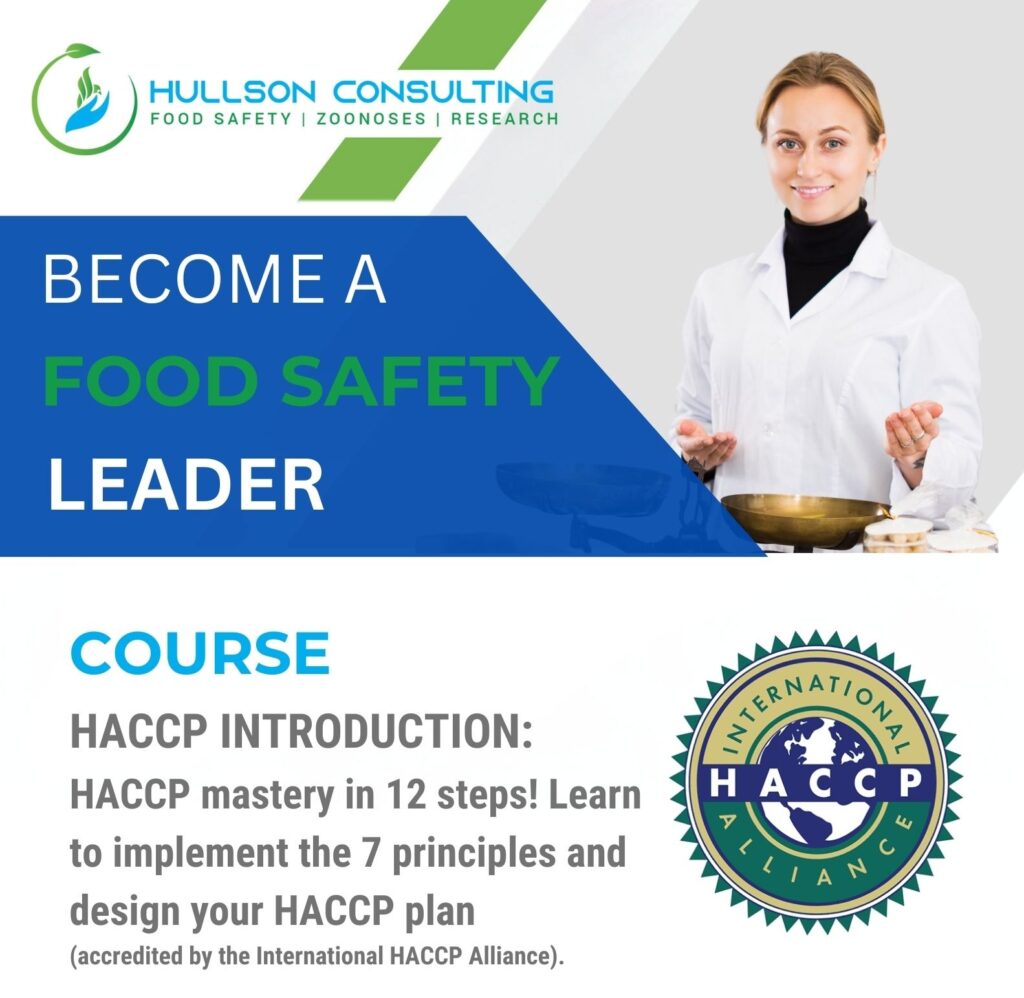Course format: on-demand/self-paced. After payment, you will receive immediate access to the course content.
Trainer: Carol Hull-Jackson (DVM, MPhil, PhD)
Director, Food safety consultant, Microbiologist, Lecturer & Trainer
Price: USD 42.00 | RM 180
Accreditation: The International HACCP Alliance, USA (IHA). Upon completing this course, you will receive a certificate with the IHA seal.
Who Is This Course for:
- Food manufacturers & retailers
- Restaurant/food & beverage manager
- Food handlers/servers/baristas
- Students
- Food science and safety
- Food Microbiology
- Food innovation
- Food security
- Anyone wanting a better understanding of foundational food safety practices
At the end of this course, you should be able to:
Learning Objectives:
- Recognise and explain the relationship between HACCP and food safety.
- Describe the history of HACCP
- Discuss the benefits of implementing HACCP
- Review Prerequisite Programs
- Identify and control hazards
- Discuss the five preliminary steps and the seven principles of HACCP
- Understand how to implement and maintain a HACCP program
- Recognize regulatory issues affecting HACCP implementation
Course outline:
Section 1: Important Definitions
Section 2: HACCP and Food Safety:
- History of HACCP
- Benefits of HACCP
Section 3: The three types of hazards and controls
- Biological
- Chemical
- Physical
Section 4: HACCP in relation to QMS
Section 5: Legal responsibilities
- Legal responsibilities of food businesses
- Lega responsibilities of food handlers
Section 6: Developing the HACCP plan
- Prerequisite programs
- The five preliminary steps
- The seven principles of HACCP as defined by CODEX
Section 7: Implementing and maintaining the HACCP plan.
Five initial steps
- Assemble the HACCP team
- Describe the product
- Identify its intended use
- Construct a flow diagram
- Perform On-site verification of the flow diagram
Seven HACCP principles
- Principle 1: Identify hazards
- Principle 2: Determine the Critical Control Points (CCPs)
- Principle 3: Establish critical limits for each CCP
- Principle 4: Establish monitoring of critical limits
- Principle 5: Establish corrective actions
- Principle 6: Establish verification procedures
- Principle 7: Establish documentation and record-keeping procedures
Section 8: Recognizing regulatory issues impacting HACCP
- HACCP enforcement
- HACCP and international regulations
Section 9: Wrapping it all up:
- Summary
- Final quiz
- Case study/assignment.
Price: USD 42.00 | RM 180
